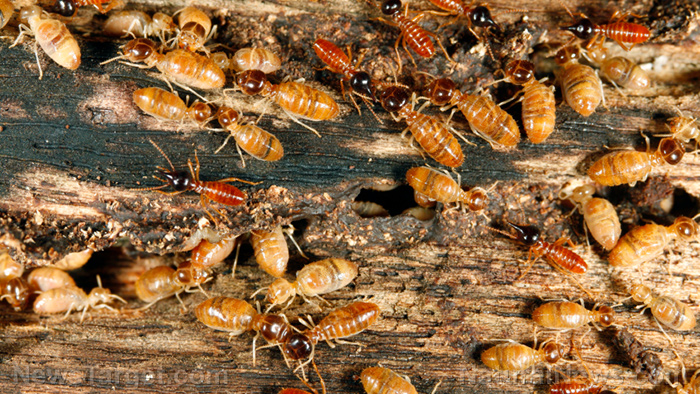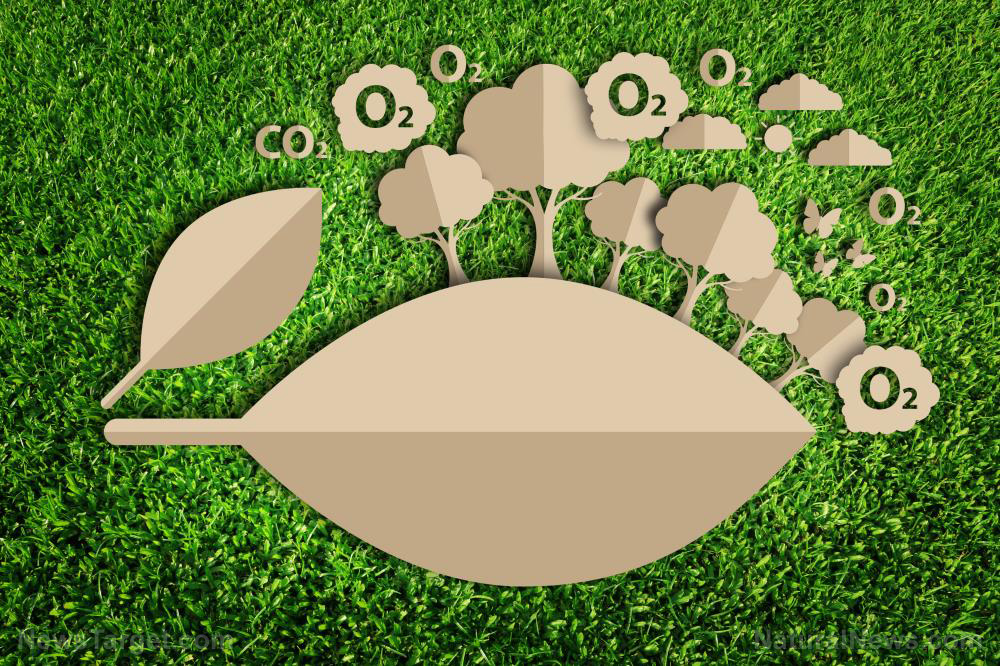Beneficial pests? Study shows that termites can alleviate the damage that droughts cause in tropical rainforests
09/13/2019 / By Edsel Cook

Most termites don’t deserve the bad reputation meant for the few species that are actual pests. An international study found that the insects actually help preserve tropical rainforests during periods of drought.
Termites thrive in tropical regions with plenty of cellulose-rich plants that they can digest. The “sheeting” structures they construct above ground let them travel through the rainforest in safety even during dry spells. They also make tasty meals in an emergency.
Many researchers believe that termites make positive contributions to decomposition, soil moisture, and other essential activities in the soil. However, the part that these “white ants” play in those processes remains vague due to how hard it is to suppress the insects’ activity within a site so that researchers can understand what they are doing.
Researchers from the University of Hong Kong (HKU) and their counterparts from around the world found a way to suppress the activity of termites effectively. By combining rolls of toilet paper with regular observation of termite communities, they figured out the role termites play in the tropical rainforest ecosystem. (Related: Flowering plant from the Amazon rainforest found to have anticancer potential.)
Believe it or not, termites protect the rainforest instead of devouring it
Led by researcher Dr. Louise Ashton, the joint research team set up their experiment at the Maliau Basin Conservation Area in Malaysian Borneo during the start of the 2015 El Nino dry season. They set up a quartet of termite suppression plots, each of which measured 6,400 square meters, and four control plots in the tropical rainforest.
Assisted by Malaysian counterparts who were familiar with the area, Ashton and his colleagues visited the sites in expeditions that lasted for several months. They repeated the process at the same place in 2016 after the drought came to an end. They spent a total of nine months in field expeditions.
The long-term approach gave them the ability to see the ecological roles of termites in rainforests. It also became possible to study the impact of drought on the insects’ activity and the associated effects on the local ecosystem.
The HKU-led team reported that the populations of termites at the unsuppressed sites rose during the 2015 drought. Conversely, their numbers dropped during the 2016 period, after the area received regular rainfall again.
Furthermore, the more significant numbers of insects broke down leaf litter at a higher rate. They similarly improved nutrient heterogeneity and moisture levels in the soil. Seedlings in the termite sites survived more often.
“Termites confer important ecosystem services, not only in pristine tropical rainforest[s], but in disturbed or even agricultural ecosystems, if termite abundance is reduced with disturbance, these habitats could be particularly sensitive to drought,” stated Ashton.
Termites serve as “ecological insurance” for tropical rainforests during droughts
The experiment showed that biological communities assisted their ecosystems during severe environmental stress. As long as a community remained intact, its members contributed in various ways.
Earlier studies examined the effects of harsh droughts on tropical rainforest plants. The HKU study enriched the existing scientific literature by showing that termites protected their homes from the ravages of dry spells. The tiny but numerous insects pulled more than their weight when it came to preserving the rainforest.
Ashton noted that most people consider termites to be pests that ruin crops and infest wooden homes. Their study showed a different, positive side to the insects, which kept the tropical rainforest functional during El Nino and other dry periods.
“Given that droughts are predicted to become more frequent and severe… termites may be beneficial for maintaining decomposition, soil moisture, nutrients and seedling survival during droughts, and this may also be true in other ecosystems including agricultural systems,” he concluded.
Sources include:
Tagged Under: biodiversity, conservation, cool science, discoveries, drought, Ecology, ecosystem, environment, insects, rainforest, termites, wildlife
RECENT NEWS & ARTICLES
NewScienceReport.com is a fact-based public education website published by New Science Report Features, LLC.
All content copyright © 2018 by New Science Report Features, LLC.
Contact Us with Tips or Corrections
All trademarks, registered trademarks and servicemarks mentioned on this site are the property of their respective owners.



















